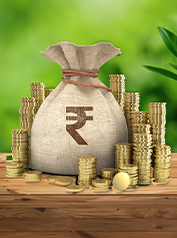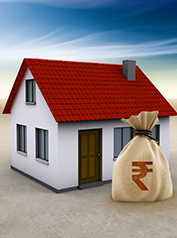₹ 22,388,509
₹ 1,50,00,000
₹ 4

- Years
Purchasing a home is a significant financial commitment, and the down payment is a key factor in determining your loan terms.
... Read MoreUnderstand how much to pay as a home loan down payment to manage EMIs effectively, its advantages, and strategies to save for it.

Purchasing a home is a significant financial commitment, and the down payment is a key factor in determining your loan terms.
... Read MoreNo, banks typically do not give you a home loan amounting to 100% value of your property. According to RBI, the banks and NBFCs can only provide 80% of the property value as a home loan for loans above ₹30 Lakhs.
Meanwhile, for a home loan of less than ₹30 Lakhs, the bank can lend up to 90% of your property’s value.
Usually, you cannot get a home loan without making a down payment. However, you can take appropriate measures to reduce the burden of down payments.
The down payment depends on the property’s price. For homes priced below ₹30 Lakhs, lenders may finance up to 90% of the value. For properties between ₹30 Lakhs and ₹75 Lakhs, financing usually goes up to 80%.
For properties above ₹75 Lakhs, lenders typically cover up to 75% of the cost.
Negotiating is difficult as lenders follow RBI’s regulatory norms requiring 10%–25% of the property price. However, some special schemes or limited offers may provide flexibility.
A higher down payment reduces your loan amount, leading to smaller EMIs and lower total interest. A smaller down payment increases both EMIs and overall interest cost.
Lenders usually ask you to pay the minimum down payment upfront. If you are unable to do so, your loan application may be declined. However, in some cases, such as under-construction properties, the builder may let you pay the down payment in instalments. The bank does not offer this option.
Yes. A larger down payment lowers the loan-to-value (LTV) ratio, which may improve eligibility, increase the loan amount you qualify for, and help secure better rates.
Lenders typically require bank statements, income proofs, or documents supporting the sale of assets to confirm the source of your funds.












